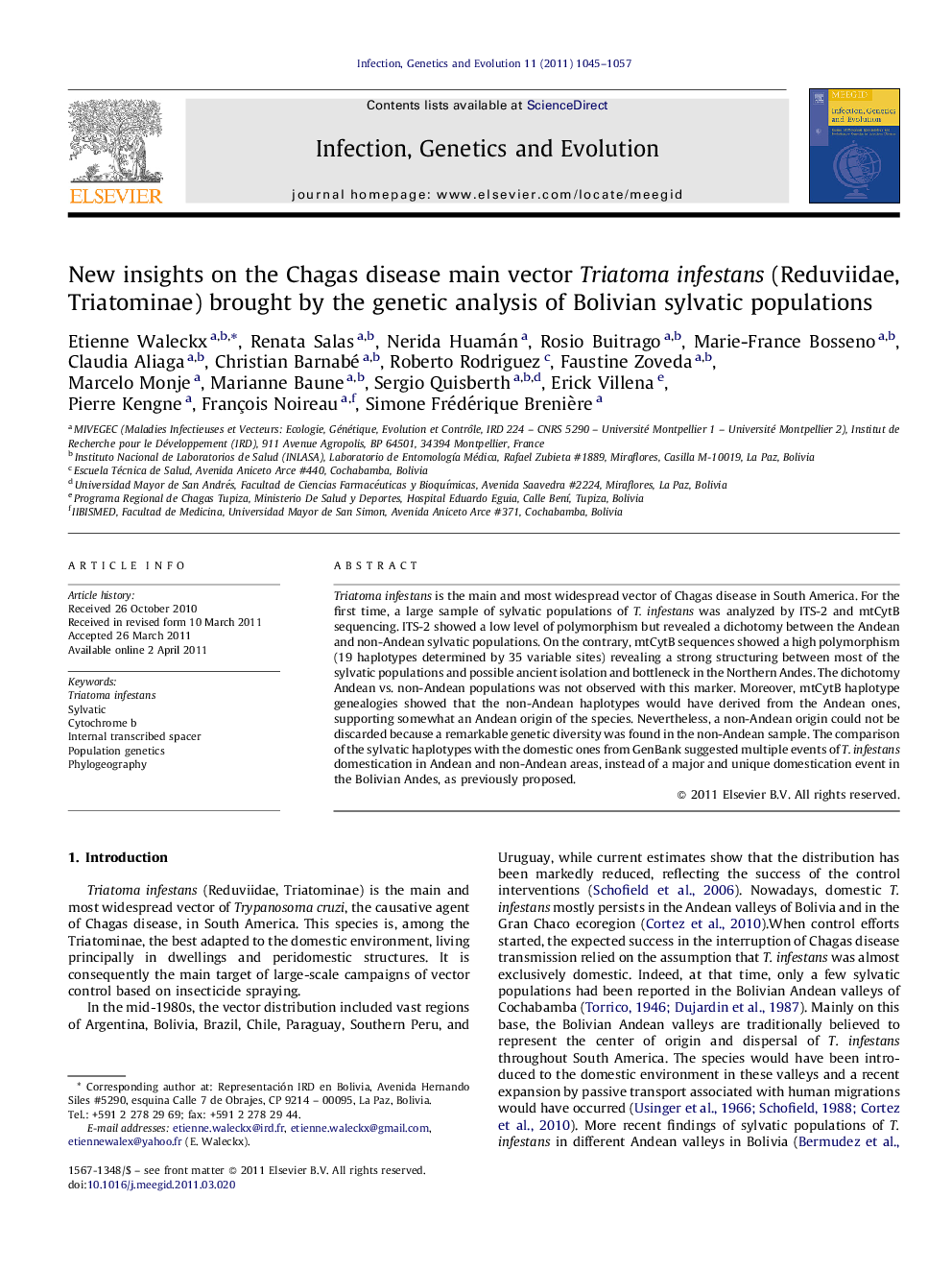| Article ID | Journal | Published Year | Pages | File Type |
|---|---|---|---|---|
| 2823125 | Infection, Genetics and Evolution | 2011 | 13 Pages |
Triatoma infestans is the main and most widespread vector of Chagas disease in South America. For the first time, a large sample of sylvatic populations of T. infestans was analyzed by ITS-2 and mtCytB sequencing. ITS-2 showed a low level of polymorphism but revealed a dichotomy between the Andean and non-Andean sylvatic populations. On the contrary, mtCytB sequences showed a high polymorphism (19 haplotypes determined by 35 variable sites) revealing a strong structuring between most of the sylvatic populations and possible ancient isolation and bottleneck in the Northern Andes. The dichotomy Andean vs. non-Andean populations was not observed with this marker. Moreover, mtCytB haplotype genealogies showed that the non-Andean haplotypes would have derived from the Andean ones, supporting somewhat an Andean origin of the species. Nevertheless, a non-Andean origin could not be discarded because a remarkable genetic diversity was found in the non-Andean sample. The comparison of the sylvatic haplotypes with the domestic ones from GenBank suggested multiple events of T. infestans domestication in Andean and non-Andean areas, instead of a major and unique domestication event in the Bolivian Andes, as previously proposed.
► Large sample of sylvatic populations of Triatoma infestans. ► Analyzed by ITS-2 and mtCytB sequencing. ► Non-Andean origin of the species cannot be discarded. ► Multiple events of T. infestans domestication in Andean and non-Andean areas are suggested.
